Outlook enables you to insert objects, files, and
Outlook items into your Calendar items. For example, you may have a
meeting to which you want to take an important document or an agenda.
You can insert the document into the meeting item so that you don’t
forget to take it with you and so that other attendees have a copy of
it. You can add contacts from Outlook to a calendar item in much the
same way.
1. Add an Outlook Item
Open an appointment, meeting, or event.
Click the Insert tab on the ribbon.
Select the Outlook folder in which the item is stored.
Select the Outlook item you want to insert from the Items list.
Click OK. The selected item now appears in the comment field.
Click
the Meeting, Appointment, or Event tab, and then click Save & Close
(for an appointment or event) or Send Update (for a meeting).
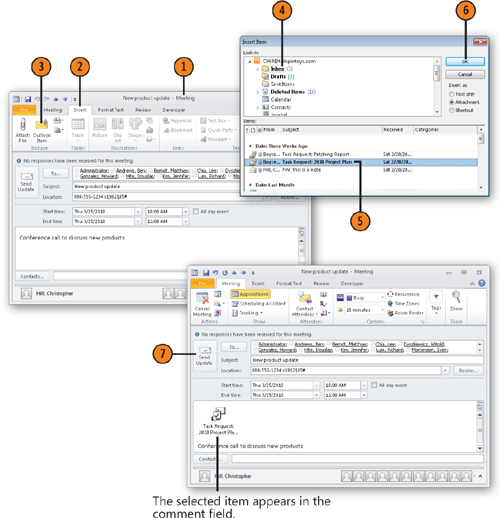
Note:
Outlook uses an item-specific
icon to indicate the type of Outlook item that you can insert, such as a
note icon for a note item or calendar icon for a calendar item.
Note:
To insert the text
contained in a contact rather than the contact address card itself,
select the Text Only option in the Insert Item dialog box.
2. Add a File
Double-click an appointment, meeting, or event.
Click the Insert tab on the ribbon.
Click the Attach File button.
Select the file you want to insert.
Click Insert. The added file appears in the comment field.
Click the Meeting, Appointment, or Event tab, and then click Save & Close (or Send Update, for a meeting).
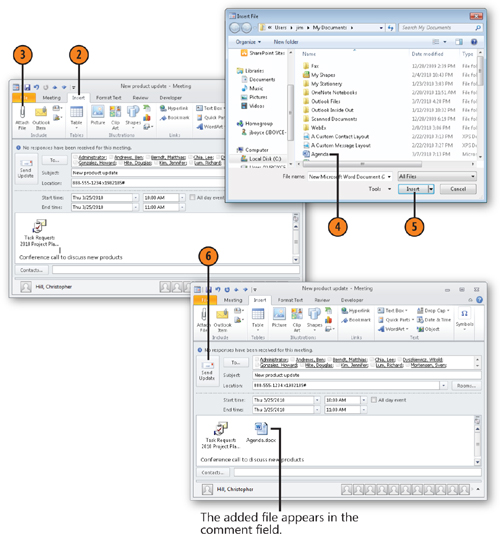
Note:
To delete a file, item, or object from a Calendar item, select the item and press Delete.
3. Add an Object from a File
Click the Calendar icon on the Navigation Pane.
Double-click an appointment, meeting, or event.
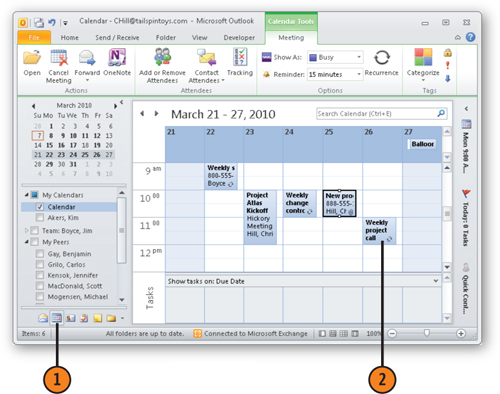
Click the Insert tab on the ribbon, and then click in the notes area of the item.
Click Object on the Text group of the ribbon’s Insert tab.
Click the Create From File tab.
Click Browse.
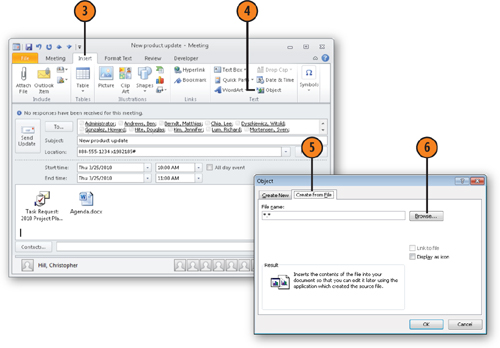
Note:
Because you can add objects
from a file, you can also embed a portion of a spreadsheet or other type
of document in the appointment item for reference. For example, if you
are discussing a project issue list in a meeting, you might embed the
issue list from a Microsoft Excel spreadsheet in the meeting request so
that the participants can review it before the meeting.
In the dialog box, click the object you want to add.
Click Insert, and then click OK in the Object dialog box. The added object appears in the comment field.
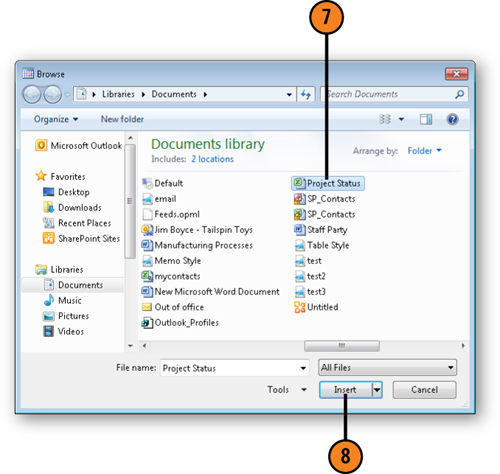
Click the Appointment, Meeting, or Event tab, and then click Save & Close (or Send Update).

Note:
To create a new object,
such as an Excel worksheet, select Create New in the Insert Object
dialog box. When you click OK to insert the object, you then create the
new object in that object’s native application (such as Excel).